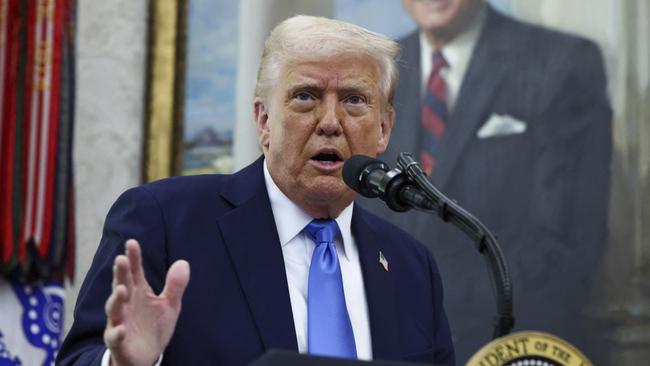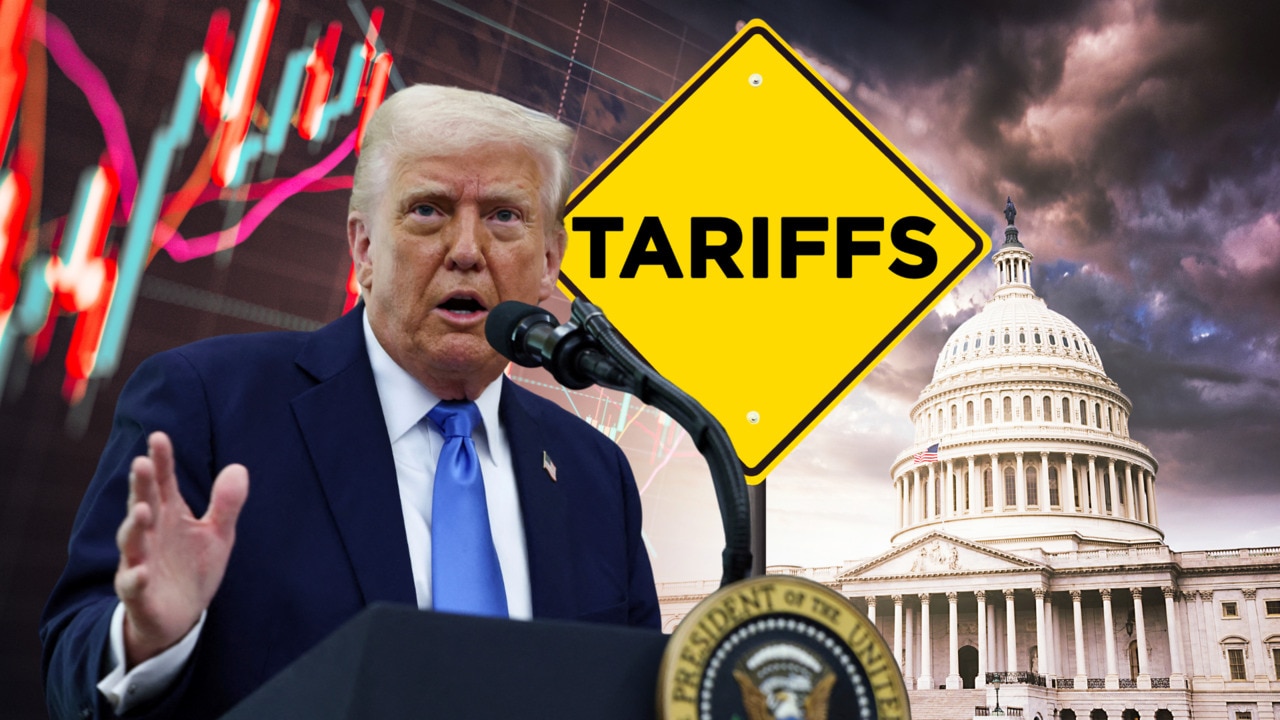Have super funds walked into a market trap after lifting bets on Donald Trump?
Your superannuation money is being poured into US shares just as Donald Trump threatens to up-end sharemarkets with his Liberation Day tariffs plan.

Australia’s biggest super funds have lifted their bets on the Trump regime – and cut their defensive holdings in cash – just as the US President is poised to unleash more volatility on the sharemarket with his Liberation Day tariff plans.
As brokers cut their forecasts for share returns this year – and US markets do worse than Australia or Europe over the same period – our biggest super funds have lifted their exposure to US shares to unprecedented levels.
Moreover, the big super funds have also been cutting their hedging exposure ahead of what investment bank Barclays described this week as “the current path of further trade wars and policy chaos”.
With US shares now taking out the majority of the world sharemarket index, Deutsche Bank says Australia’s big super funds have increasingly moved offshore, suggesting: “The equity allocation at Australia funds is around the top end of global ranks.”
It also points out that the big funds have been “steadily reducing their allocation to cash”.
“The decidedly low levels of cash holding is an interesting development,” Lachlan Dynan, macro strategist at Deutsche Bank told The Australian.
Dynan’s research shows that cash allocation at big super funds has declined steadily over the last decade – new contribution flows are now going into international shares at roughly four times the rate of cash.
He also explains the nation’s largest super funds have been pushed towards global markets – especially towards Wall Street – due to Australian regulators turning their attention to them after “reaching a saturation point domestically”.
Trump’s Liberation Day announcements are due this Wednesday, April 2.
While analysts had hoped that Trump might pull back on his more extreme tariff proposals, there is no sign of that yet happening. Investment bank Citi suggests Trump has already moved to put in place an effective tariff rate of 8 per cent, up from 2.3 per cent, and it may top 10 per cent after new tariffs are announced.
The Wall Street Journal also reports that in recent days Trump has pushed his team to be more aggressive on tariffs and has encouraged a plan that would apply higher rates of tariffs to a broader set of countries

With the unexpected escalation of tariffs, investment bank Barclays warns: “We have been overweight global equities and fixed income for many, many quarters – but for the first time in years we find ourselves genuinely worried about risk assets.”
Wall Street is now the weakest of the major markets after months of Trump tariff moves. The S&P 500 is down around almost 5 per cent year to date while the ASX is down about 4.1 per cent. In contrast, the Stoxx Europe 600 index is up by 6 per cent.
As markets wait for detail on Liberation Day, Barclays suggests: “The world’s policymakers (and especially those in the US) are now at a crossroads. Tariffs and policy uncertainty have already damaged confidence and slowed activity. Our new global forecast of 2.9 per cent calendar year growth is a marked slowdown from 2024’s 3.3 per cent.”
How the Liberation Day tariff plan will pan out is unclear and super fund managers will defend their current settings as a reflection of long-term strategies that are not up for review due to Trump.
Nonetheless, it is now clear that Australia’s biggest super funds have lifted their exposure to the US in what may well turn out to be a market trap.
James Kirby hosts the twice-weekly Money Puzzle podcast






To join the conversation, please log in. Don't have an account? Register
Join the conversation, you are commenting as Logout